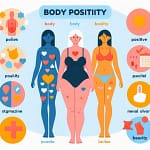Teen shows have been a staple of television for decades. From lighthearted sitcoms to emotional dramas, these shows about the trials and tribulations of adolescence consistently draw loyal audiences. Let’s take a look at how teen shows have evolved over the years.
The Early Days
Some of the earliest teen shows debuted in the late 1950s and 1960s. These shows presented idealized versions of teenage life that were quite tame compared to modern programs.
- The Many Loves of Dobie Gillis (1959-1963) – This sitcom followed the romantic pursuits of teenager Dobie Gillis. While Dobie pined after unattainable girls, his best friend Maynard Krebs was a prototypical beatnik.
- The Patty Duke Show (1963-1966) – Patty Duke played dual roles as identical cousins Cathy and Patty Lane. The show explored typical teen problems through light comedy.
- Gidget (1965-1966) – Sally Field starred as the titular Gidget, a perky teenager who embraced California surf culture. Plots revolved around Gidget’s adventures with her friends.
While quaint by today’s standards, these shows laid the groundwork for teen programming. They established common themes like school, friendships, relationships, and family life that continued in later shows.
Expanding Horizons
In the 1970s, teen shows pushed into edgier territory and shed more light on relevant social issues:
- The Brady Bunch (1969-1974) – This iconic show featured six kids from two blended families. Storylines touched on divorce, racism, sexism, and more.
- The Partridge Family (1970-1974) – A musical family band, led by Shirley Jones and David Cassidy, toured America in their psychedelic bus. Episodes highlighted teen struggles.
- One Day at a Time (1975-1984) – One of the first shows to delve into serious issues like sexuality, rape, suicide, and more. It featured a divorced mother raising two teen daughters alone.
- Diff’rent Strokes (1978-1986) – This sitcom followed the culture shock of two African American brothers from Harlem who are adopted by a wealthy white man. Racial themes were regularly explored.
- The Facts of Life (1979-1988) – Originally a spin-off of Diff’rent Strokes, this show revolved around teenage girls at a boarding school. It covered pressing topics like drug use, sexism, and more.
With their frank looks at relevant issues, these shows expanded the depth and dramatic potential of the teen genre.
Soapy Sensations
The 1980s ushered in the era of the “primetime soap opera” – serialized teen dramas characterized by melodrama, romance, and over-the-top plotlines:
- Beverly Hills, 90210 (1990-2000) – Set in glamorous Beverly Hills, this iconic show followed twins Brandon and Brenda Walsh as they adjusted to their new lives at West Beverly Hills High School.
- Saved by the Bell (1989-1993) – This bright sitcom was set at the fictional Bayside High School and followed a core group of friends led by Zack Morris. Known for its corny, lighthearted humor.
- Dawson’s Creek (1998-2003) – This drama series explored four close friends coming of age in the fictional town of Capeside. The scripts were infamously verbose, with the teens speaking in philsophical monologues.
- The O.C. (2003-2007) – A “fish-out-of-water” drama about troubled teen Ryan Atwood getting adopted by an affluent family in ritzy, coastal Orange County, California.
These soapy shows leaned into melodrama, intrigue, and risqué storylines. Teens were presented as affluent, beautiful, and overly mature.
Reality TV Takeover
In the early 2000s, scripted teen soaps were displaced in popularity by reality shows that followed the “real lives” of teenagers:
- Laguna Beach: The Real Orange County (2004-2006) – This reality show on MTV gave viewers an inside look at the personal lives of real-life wealthy teens in Laguna Beach. It inspired spin-offs and copycats.
- The Hills (2006-2010) – A Laguna Beach spin-off that followed Lauren “LC” Conrad as she moved to LA to work as an intern at Teen Vogue magazine.
- 16 and Pregnant (2009-2014) – This controversial MTV documentary series followed different pregnant teenagers each episode as they dealt with parenthood at a young age.
- Jersey Shore (2009-2012) – Cameras tracked the summer shenanigans of Italian American youths sharing a vacation home on the Jersey Shore. Known for its outlandish characters, tanning, and clubbing hijinks.
While no longer works of fiction, these reality programs continued the teen show legacy of dealing with relationships, identity, and youth culture – albeit in an exaggerated, sensationalized format.
The CW Renaissance
In the late 2000s, teen programming returned to scripted dramas, thanks in large part to youth-oriented network The CW. Some of their notable shows included:
- Gossip Girl (2007-2012) – Chronicled the lives of wealthy young adults on Manhattan’s Upper East Side. Focused extensively on fashion, prestige, status, and scandal.
- 90210 (2008-2013) – A Beverly Hills, 90210 spinoff featuring a new generation of West Beverly High students. Added a “hyper-modern” spin on the teen soap.
- The Vampire Diaries (2009-2017) – Followed a young woman caught in a love triangle between two vampire brothers. Launched a wave of supernatural teen shows.
- Riverdale (2017-present) – Archie Comics characters are reinvented with a dark, neo-noir twist. Features lurid storylines involving murder, lust, crime empires, and more.
The CW specialized in heightened, surreal dramas with gorgeous young casts. These shows leaned into teen tropes but added fresh spins inspired by genres like horror, fantasy, and mystery.
Streaming Innovation
In the streaming era, Netflix, Hulu, and other digital platforms have pushed teen programming into uncharted territory. Freed from the constraints of network TV, creators have more freedom to tell groundbreaking stories.
- SKAM (2015-2017) – This Norwegian show was released across multiple digital platforms in real time to mimic the digital experiences of modern teens. It covered heavy topics like sexual assault.
- 13 Reasons Why (2017-2020) – A Netflix drama exploring how a teen’s suicide impacts her classmates. Lauded for shedding light on issues like mental health, sexual assault, and suicide, though also condemned for romanticizing suicide.
- Sex Education (2019-present) – A refreshingly honest comedy/drama that follows the son of a sex therapist trying to set up an underground sex therapy clinic at school. Praised for avoiding tropes and stigmas around teen sexuality.
- Euphoria (2019-present) – An intense HBO drama starring Zendaya that depicts the gritty lives of troubled teens as they grapple with issues like drugs, sex, trauma, social media, and more. Sparks controversy for its risqué content.
By embracing controversial themes, these shows are expanding representations of the teenage experience. Streaming allows them to tell stories that would never air on mainstream television.
The Future
Today’s television landscape offers vastly more choices than the limited networks of television’s early days. Teen programming has expanded in tandem, presenting an ever-wider diversity of stories and themes.
In many ways, teen shows mirror the evolution of adolescent life itself. They began in a simpler era with conventional tropes – just as earlier generations had more traditional, constrained teen years. But over time, the shows grew more complex as societal attitudes changed. Teens were given more freedom, platforms, and vehicles for self-expression.
Modern teen programming is a far cry from Dobie Gillis and Gidget. But as television continues to expand, these shows will keep evolving to portray adolescence in new lights. More groundbreaking stories are sure to resonate with future generations. Teen programming remains in its infancy – it will undoubtedly continue maturing in directions we can’t yet predict.
Notable Teen Dramas From Each Decade
| Decade | Popular Teen Shows |
|---|---|
| 1950s | The Many Loves of Dobie Gillis |
| 1960s | The Patty Duke Show, Gidget |
| 1970s | The Brady Bunch, The Partridge Family, One Day at a Time |
| 1980s | Diff’rent Strokes, The Facts of Life |
| 1990s | Beverly Hills 90210, Saved By the Bell, Dawson’s Creek |
| 2000s | The O.C., Gossip Girl, 90210, The Vampire Diaries |
| 2010s | Riverdale, 13 Reasons Why, SKAM, Euphoria |
Defining Features of Iconic Teen Shows
| Show | Defining Features |
|---|---|
| Beverly Hills, 90210 | Glamorous LA setting, melodramatic storylines, focus on status |
| Saved By the Bell | Goofy humor, lighthearted tone, stereotypical high school plots |
| Dawson’s Creek | Verbose, philosophical dialogue, romantic entanglements |
| The O.C. | Soapy drama of “fish-out-of-water” among wealthy beach community |
| Gossip Girl | Scandalous storylines among elite NYC socialites, extravagant fashion |
| Euphoria | Shocking content exploring gritty side of Gen Z struggles with vices and mental health |
Themes and Tropes Across Teen Shows
Some topics commonly explored in teen shows include:
- School life
- Friendships
- Relationships and crushes
- Rebellion against parents
- Coming of age rituals
- Parties and vices
- Popularity and social status
- Fitting in and finding identity
- Peer pressure
Common tropes and devices used in teen shows:
- Love triangles
- Girl/boy next door romance
- Plotlines about prom, graduation, dances
- High school stereotypes (jocks, nerds, etc)
- Mean girl rivalries
- Losing virginity as a “life milestone”
- Teen pregnancy scares
- Cliques of wealthy, attractive, trendy students
- Rebellious bad boys/girls
While not always realistic, these familiar elements help teen shows resonate with nostalgic audiences who remember the emotional experience of adolescence.
The Impact of Teen Shows
Teen television has had significant influence on pop culture and society:
- Reflected and sometimes guided fashion trends – like 90210 popularizing “Brenda Walsh bangs”
- Provided a “rite of passage” shared experience across generations who grew up watching same shows
- Shaped perceptions and dialogue about teen issues, for better or worse
- Launched careers of teen heartthrobs who often became pop culture icons – like Zac Efron
- Inspired real-world locations and tours – e.g. people flocking to The O.C. and Gossip Girl filming locations
- Perpetuated teen archetypes that became cultural shorthand – like the girl/boy next door
- Provided relatable escape viewing for teens seeking entertainment about people their own age
Even as society progresses, the timeless, universal adolescent search for identity ensures teen programming will continue enthralling future audiences. These shows offer both a snapshot of their times and a time capsule reminding us of our own youth.













